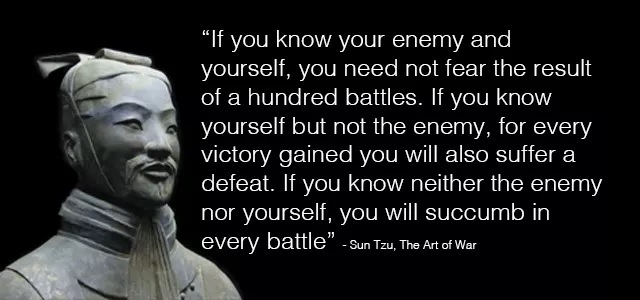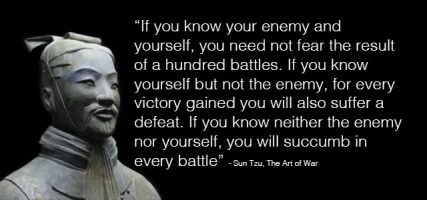In the 6th century B.C.E., Chinese general Sun Tzu wrote in the manuscript the Art of War, “If you know the enemy and know yourself, you need not fear the result of a hundred battles. If you know yourself but not the enemy, for every victory gained, you will also suffer a defeat. If you know neither the enemy nor yourself, you will succumb in every battle.”

The lesson of this quote is quite appropriate for modern incident management. In any incident, no matter how small or how large, we need three things to be successful. First, we need to know our enemy. We call this situational awareness and, without it, we will likely fail. Second, we need to know ourselves. We need to know our capability and the resources that we can bring to bear on an incident. Third, we need to have a set of response objectives, either written or verbal, that all of the responders are informed of. But we cannot have number three without first knowing the enemy and knowing ourselves.
Let’s take a look at the keys to successful resource management on an incident. During an initial response, resources are sent by an organization or multiple organizations to an incident. The Incident Commander then deploys these resources in defined strategic/tactical actions to meet a set of incident objectives. As the incident grows, however, the job of resource management becomes more complex. So what are the steps or techniques for good management of resources on scene? They start at the beginning of the incident:
Establish staging: Locate a Staging Area close to the incident where incoming resources can check-in and be briefed by the Incident Commander or Operations Section Chief, before being assigned to a tactical work assignment. Consider assigning a Resources Unit Leader early to assist with this task.
Check-in and track the resource: Capturing resource information early with a check-in process is imperative. Good resource management means having a clear picture of the resources on-scene and available on the incident. Once the resource has checked-in, track the resource throughout the life of the incident.
Capture information of resources already on scene: Early in an incident resources may go directly to a tactical assignment. This is one of the biggest challenges to effective resource management: finding a way to identify those resources already engaged. Some techniques may include calling dispatch centers to determine resources sent to the incident or providing a mobile Check-in Recorder to move around the incident to capture this information.
Brief resources: To provide for efficient and safe operations, resources arriving at staging should be given a briefing before engaging in tactical operations. A little face-to-face time here will enhance tactical operations and the safety of all resources involved.
Provide for rest and rehab: Consider the need for rest and recovery of resources engaged on the incident. Fatigued resources are a safety liability. Rotate resources in and out of staging.
Establish a second staging area for resources traveling into the incident area: On large incidents, consider establishing a second staging area outside the area of tactical operations, where resources arriving from a distance can be checked-in and briefed before moving forward. This is especially important where there is a problem with “self-dispatch” of both agency and contract resources. This staging area provides the incident a location where those resources, who should not be there, can be sorted out.
Credentialing: Consider the need for credentialing responders on an incident and where this process will occur. This is extremely important if a security perimeter is established around the incident. All resources need to be informed of this process.
Resource availability and ordering process: The final step in “understanding ourselves” is to understand the overall resource availability and what the process is for obtaining additional resources. A good Logistics Chief should design and post the resource requesting and ordering process so that all members of the Incident Management Team know how to request a resource when needed.
Good resource management will help you not only have a safer work environment it will also save money and increase your chances of success in every battle.
Copyright © 2014 by EMSI, Inc.


